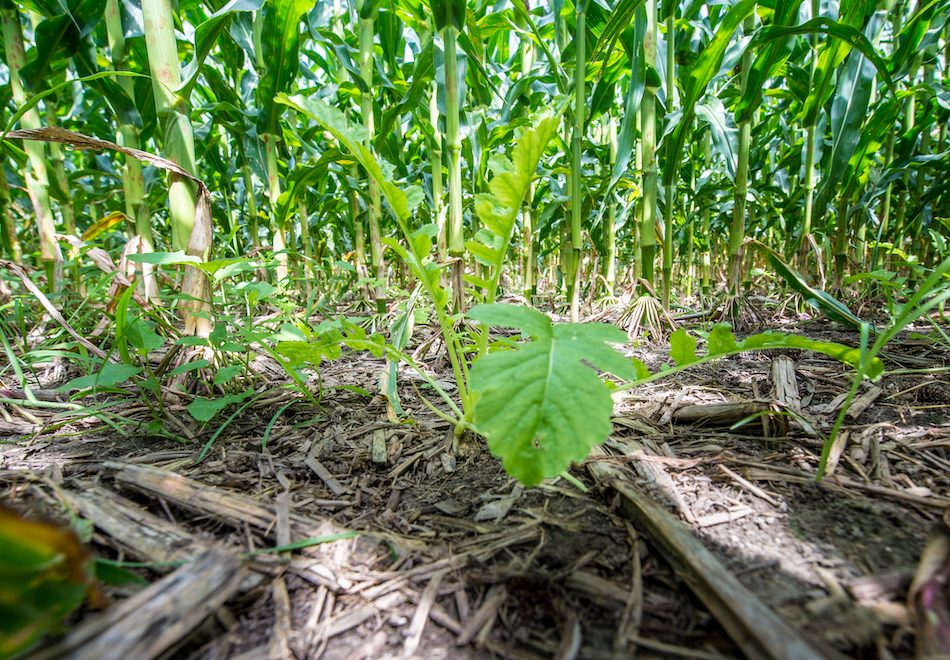The use of cover crops within a rotation is commonplace for many producers, given the soil health benefits. Some producers are moving toward utilizing companion crops, planting a cover crop with a cash crop and allowing them to grow simultaneously. For livestock producers, having forage available to graze earlier, can be a benefit itself.
Cover crops, typically grown between crops, are often grazed and then allowed to stand, reducing erosion or left to decompose to reap the benefits to soil health. According to Dennis Schwartzkopf, an expert with Buffalo Brand Seed, cover crops protect against soil loss due to erosion and also provide organic matter which encourages beneficial soil microbial life. He said for every 1 percent increase in organic matter in the top foot of soil, farmers can expect an additional 20,000 gallons of water holding capacity per acre. He said it also pays dividends through reducing nutrient loss, allowing roots to unlock nutrients, providing habitat for important soil organisms, reducing soil compaction and increasing the soil’s ability to absorb and hold water.
Knowing these benefits, he said many customers are turning to companion crops, planted at a lower seeding rate alongside a cash crop. He said the use of companion crops has grown exponentially in the past five years, especially in the seeding of a companion crop during the corn’s V4 to V7 stage. Planting the companion crop at 10 to 14 pounds per acre, he said has resulted in a yield increase in 75 percent of fields.
Schwartzkopf said he saw a video of a companion crop seeded at a lower rate, being used as a weed barrier. This piqued his curiosity.
“Actually, one dealer had done this and had been in the field in the second week of September when it was 104 degrees air temperature,” he said. “He went in there and his soil temperature and air temperature both were 10 degrees less with a companion crop in the growing crop rather than the traditional chemical part of the field.”
He said the truly unique thing was the moisture in the field, so much so that he said you could step into the field at 6 o’clock in the evening and there was enough moisture to leave with wet pantlegs. He also noted that the conventional side of the field was noticeably hard with soil compaction, but the companion crop side was “like walking on a feather pillow.”
“The companion crop was like a rainforest effect,” he said. “The moisture dripping from the leaves above was dropping onto the ground, so it was taking the E out of ET — you just had transpiration without evaporation.”
RAISING YIELDS
After seeing this, and with the challenge of chemical-resistant weeds on his mind, he moved forward to learn more.
Corn is typically the cash crop used with a companion crop though Schwartzkopf said there has been some interest from Western Sugar that led to using sugar beets as well.
“The purpose isn’t necessarily to produce more tons of beets, but to stay at the same level of tonnage production but raise sugar with the diverse soil biology going on from the diverse plants in the companion crop,” he said.
The cool, wet spring has been a challenge for the use of companion crop trials. Though planting was later than hoped, it was preferable to too early, which could result in a companion crop outgrowing the corn when conditions aren’t ideal for corn.
“It’s a management tool to use with great benefit,” he said. “The soil is just so much more mellow.”
Companion crops used can include Italian rye grass, medium red clover, forage rape, forage radish, purple top turnips and buckwheat. The ability to graze the companion crop is secondary, he said. The real benefit comes from allowing it to sit on the field over the winter, building up biomass and collecting moisture.
At a trial field in Ault, Colo., on the companion crop side in its second year, he said a moisture probe could be put in the ground about 4 1/2 feet with no trouble. On the conventional side of the field that had identical fertility treatment, the probe could only go half as far. Some of this, he said, is also due to the deep-rooting companion crop plants that break up and loosen the soil.
Schwartzkopf said those planting companion crops see reduced weeds due to the companion crop smothering weeds and the leaf canopy blocking light.
“It’s a unique management tool that was used years and years ago,” he said. “When chemicals came, it kind of went by the wayside and we’re reliving things that were used in the 50s and finding out they work exceptionally well.”





Post a comment
Report Abusive Comment